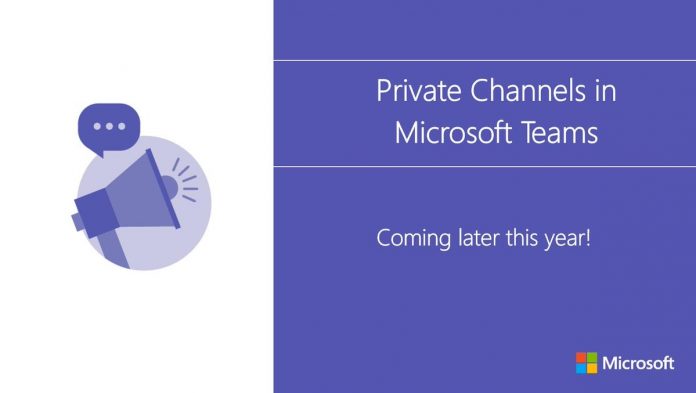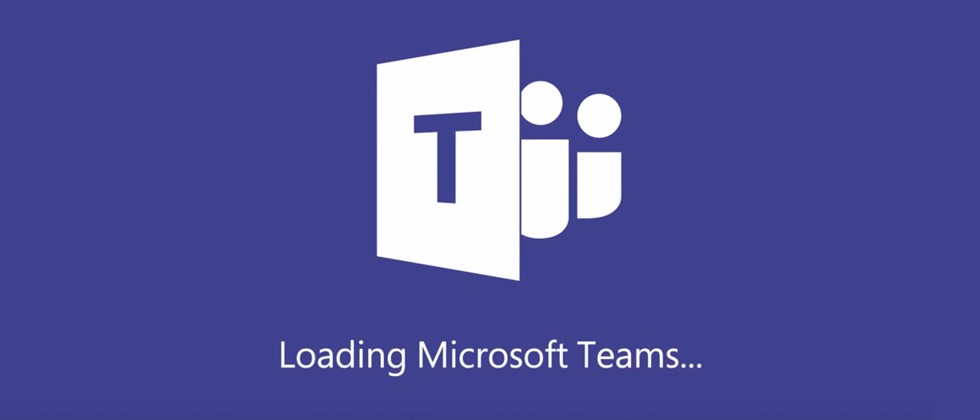Get your organization on board with Microsoft Teams with our free webinar “6 Expert Microsoft Teams Adoption Strategies THAT WORK!“
You may have heard about a new feature in Microsoft Teams’ next major release: Private Channels. This hot new feature means that you’ll be able to:
“Limit which team members can see the conversation and content within a particular channel. You can right-size channel participation and exposure without having to create discrete teams to limit visibility.”
This has been one of the most demanded features in Teams since 2016 and its release to commercial tenant users is just around the corner. Hip hip hooray!
However, if your agency is leveraging Office 365 GCC, Office 365 GCC High, or Office 365 GCC DoD environments, this feature may not be available for you immediately after the commercial launch. Though Microsoft has not given clarification of the exact timeline for Private Channels to be available in these GCC environments, we can assume that, like most other features, they will arrive in due time.

But Why?
At this point you may be wondering, “Why can’t I just have Private Channels like everybody else?”
In the past, Microsoft has discussed that many Teams features will generally be available first to commercial users and then ported over to the GCC and other government clouds.
The federal government requires cloud applications to be approved through programs such as FedRAMP and others. As a result, some new features require additional regulatory approvals that take time.
Until Microsoft announces a GCC launch date and it becomes available in your tenant, let’s talk about your options.
Private Channel Alternatives for Office 365 Users in the Public Sector
Before we discuss alternatives to Private Channels, it’s important to keep in mind why they’ve become such a widely requested feature in the first place.
With Private Channels, admins can create private spaces in Teams that can only be seen and accessed by a selected subset of users. This subset of users must be selected from the Group that has access to the Team. You will not be able to grant outside users access to the Private Channel if they are not in the Team.
If Private Channels have been on your mind, you may have already explored workaround solutions. Here are some options from least to most effective:
In the public sector and need a Private Channel alternative? Here are some good suggestions: Click To TweetPrivate Channel Alternative #1: Use SharePoint to Define File Permissions
One use case: If you’re seeking to have Private Channels as a means to collaborate with external users, it’s possible to use SharePoint to create a private folder within a Team and invite a guest or set of users to this folder while limiting their access to everything else.
Through this method you deny your guest user(s) all the benefits of Microsoft Teams: applications, conversations, tabs, etc. It also adds extra steps for both you and your external users that will cause headaches all around.
However, direct file sharing via SharePoint, while it is outside the Teams platform, does have robust options to collaborate with external users and manage permissions that your organization may have already configured for self-service, requiring minimal IT involvement or approvals.
SharePoint is a powerful tool for team collaboration that can get overlooked, and its ability to control access to information may be exactly what you need.
If you make these types of customizations to your SharePoint environment, be prepared for the complexity it brings through breaking inheritance, unique security trimming, and users having inconsistent access to particular assets. Most of the security controls are at the tenant level, and if you need more fine-tuned controls, you may want to consider third-party toolsets—such as those offered by AvePoint—that can automatically apply governance policies to end users, applications, and data.

Private Channel Alternative #2: Create A Group Chat
Group chats are an easy way to create a private conversation with a subset of specific users within Microsoft Teams. Although group chats and Channels have a similar UI/UX, they are architecturally different on the back end in regards to where the data is stored. However, group chats still have the benefit of being able to have conversations and seamlessly share files for collaboration.
You can also add tabs and some, but not all, of the third-party apps available for channels to your chat. However, an excessive amount of group chats can make it hard to find information, and there’s a lack of centralization for shared files.
The lack of “threaded” conversations makes it challenging to identify what was said and where. The last thing you need is another situation where you’re trying to identify what was communicated to whom! Additionally, for group chats, uploaded files are stored in the OneDrive of the originator instead of a files folder in SharePoint as it would be in a Channel.
Private Channel Alternative #3: Create a New Team
Granted, this may be the very thing you wanted to avoid by leveraging Private Channels, and this may not work from a large-scale organization standpoint.
The main issue is that if a new team gets created whenever there are topics too sensitive for the broad members of a general Team, it results in proliferation of the number of Microsoft Teams users will have to keep track of, causing user confusion and frustration. Particularly when these new “Teams” are merely dissections of other “Teams.”

However, this approach lets all users access the full functionality of Microsoft Teams. In addition, you can mitigate the downside of potential Teams sprawl and clutter that needs to be managed through an automated, controlled governance process.
It’s also worth mentioning that channel cross-posting is being added across all Microsoft Teams environments. So, if creating new Teams is your solution, you’ll be able to share information across different Team channels in a single step, making this a much more palatable Private Channel alternative.

